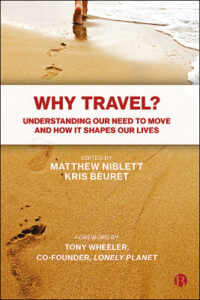Selfie-sticks banned in the National Gallery – capturing travel in the social media age
16th March 2015
The National Gallery and Palace of Versailles have recently banned selfie-sticks, following suit with a number of museums across North America. The institutions claim that the devices risk damaging the artwork and ruining the experience of fellow museum-goers, but the bans have been applauded by others as curbing the rise of this ‘wand of narcissism’. Despite criticism that selfies exemplify the self-absorption and image-obsession of the ‘millennial’ generation, selfies seem to have taken over as a way of recording and communicating our daily lives from the mundane to the extraordinary. Social media sites are filled with travel selfies (many featuring the #travelselfie hashtag) and travel magazines run features like ’25 travel selfies you must take this year’. Some pilgrims are even sharing selfies of their religious travel experiences – a trend criticised by religious leaders as detracting from the true spirit of pilgrimage. Why the inexorable rise of the travel selfie? And is it really such a new phenomenon?
‘Pics or it didn’t happen’ runs the popular internet meme, hinting at one of the functions of travel photography: proving to others – and ourselves later on – that we were really there. This desire to record, capture and share our travel experiences is a powerful one, and certainly not new – travel selfies are part of an age-old practice including travel diaries, paintings, postcards, holiday snaps and, more recently, travel blogs. ‘Networked lenses’ (cameras on smartphones) allow us to fulfil this urge far more easily than in the past, when a portrait of oneself surrounded by the spoils of travel was only available to the rich. The motivations behind this desire to share may be manifold and sometimes contradictory. Sharing can enhance social status and present ourselves as well-travelled and thus well-cultured and affluent, attributes often associated with travel. But there may also be a desire to involve others, to give loved ones a vicarious pleasure and enable them to feel connected with the experience. Whatever the motivations, some fear that the obsession to record and share can overshadow the actual experience of travel. ‘Travel becomes a strategy for accumulating photographs’ suggested Susan Sontag, highlighting that for some travellers, the desire to photograph may be one of the driving motivations for travel itself.
Such an interplay of psychological and cultural motivations, enabled by new technologies, have thus created not only an activity undertaken whilst travelling but even, perhaps, a motivation for travel itself. The ITC’s Why Travel? Project explores the complexity of human travel motivations in the belief that a better and more realistic understanding of why we travel can and should be used to make better decisions about travel at individual and policy levels. For more information on the project, including expert views from across the arts, humanities and sciences, see www.whytravel.org



